Chenghan Huang
Graph-Level Embedding for Time-Evolving Graphs
Jun 01, 2023Abstract:Graph representation learning (also known as network embedding) has been extensively researched with varying levels of granularity, ranging from nodes to graphs. While most prior work in this area focuses on node-level representation, limited research has been conducted on graph-level embedding, particularly for dynamic or temporal networks. However, learning low-dimensional graph-level representations for dynamic networks is critical for various downstream graph retrieval tasks such as temporal graph similarity ranking, temporal graph isomorphism, and anomaly detection. In this paper, we present a novel method for temporal graph-level embedding that addresses this gap. Our approach involves constructing a multilayer graph and using a modified random walk with temporal backtracking to generate temporal contexts for the graph's nodes. We then train a "document-level" language model on these contexts to generate graph-level embeddings. We evaluate our proposed model on five publicly available datasets for the task of temporal graph similarity ranking, and our model outperforms baseline methods. Our experimental results demonstrate the effectiveness of our method in generating graph-level embeddings for dynamic networks.
Embedding Node Structural Role Identity Using Stress Majorization
Sep 14, 2021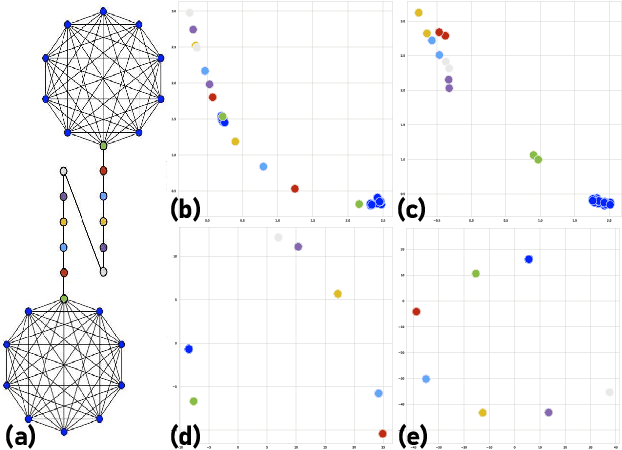
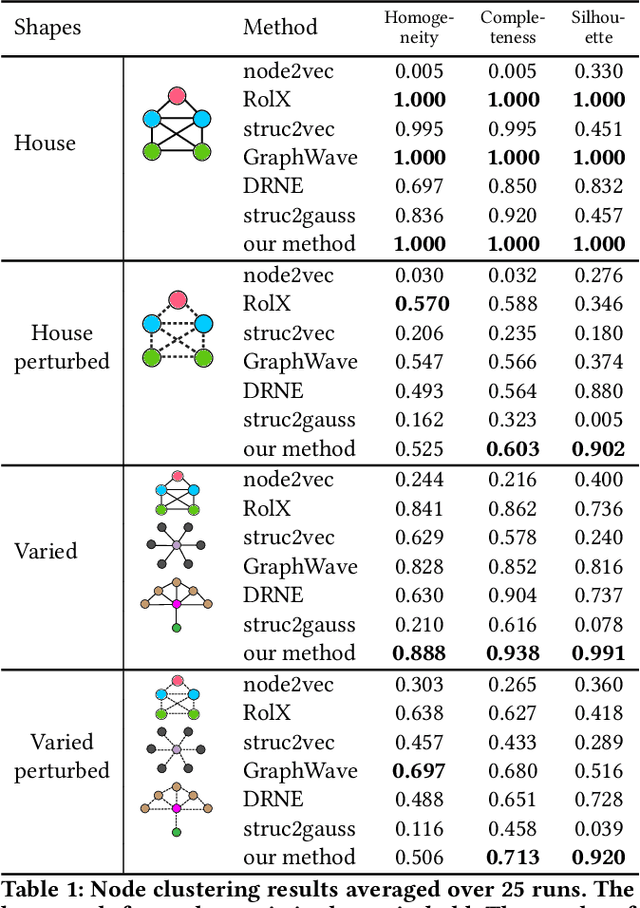
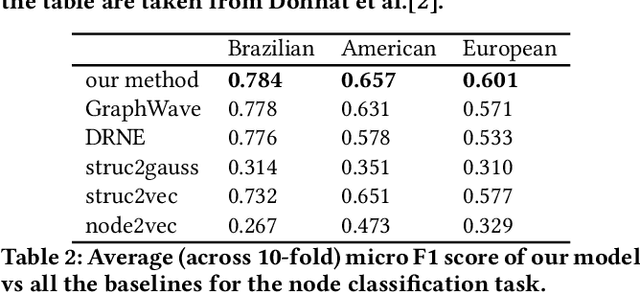
Abstract:Nodes in networks may have one or more functions that determine their role in the system. As opposed to local proximity, which captures the local context of nodes, the role identity captures the functional "role" that nodes play in a network, such as being the center of a group, or the bridge between two groups. This means that nodes far apart in a network can have similar structural role identities. Several recent works have explored methods for embedding the roles of nodes in networks. However, these methods all rely on either approximating or indirect modeling of structural equivalence. In this paper, we present a novel and flexible framework using stress majorization, to transform the high-dimensional role identities in networks directly (without approximation or indirect modeling) to a low-dimensional embedding space. Our method is also flexible, in that it does not rely on specific structural similarity definitions. We evaluated our method on the tasks of node classification, clustering, and visualization, using three real-world and five synthetic networks. Our experiments show that our framework achieves superior results than existing methods in learning node role representations.
Graph Embedding via Diffusion-Wavelets-Based Node Feature Distribution Characterization
Sep 14, 2021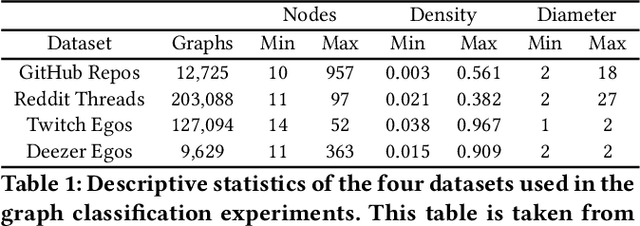

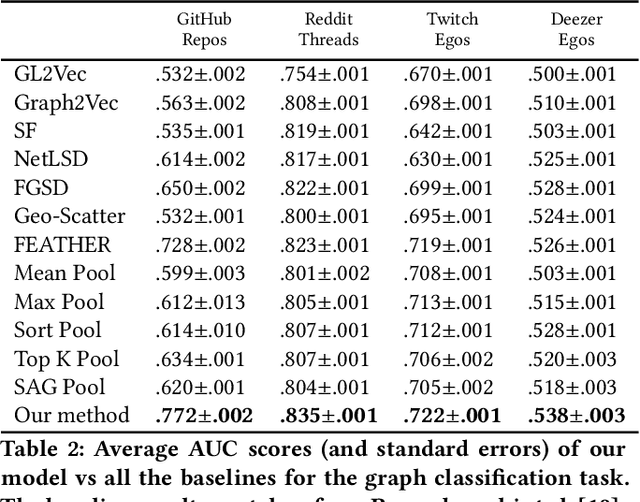
Abstract:Recent years have seen a rise in the development of representational learning methods for graph data. Most of these methods, however, focus on node-level representation learning at various scales (e.g., microscopic, mesoscopic, and macroscopic node embedding). In comparison, methods for representation learning on whole graphs are currently relatively sparse. In this paper, we propose a novel unsupervised whole graph embedding method. Our method uses spectral graph wavelets to capture topological similarities on each k-hop sub-graph between nodes and uses them to learn embeddings for the whole graph. We evaluate our method against 12 well-known baselines on 4 real-world datasets and show that our method achieves the best performance across all experiments, outperforming the current state-of-the-art by a considerable margin.
Embedding Heterogeneous Networks into Hyperbolic Space Without Meta-path
Jun 18, 2021



Abstract:Networks found in the real-world are numerous and varied. A common type of network is the heterogeneous network, where the nodes (and edges) can be of different types. Accordingly, there have been efforts at learning representations of these heterogeneous networks in low-dimensional space. However, most of the existing heterogeneous network embedding methods suffer from the following two drawbacks: (1) The target space is usually Euclidean. Conversely, many recent works have shown that complex networks may have hyperbolic latent anatomy, which is non-Euclidean. (2) These methods usually rely on meta-paths, which require domain-specific prior knowledge for meta-path selection. Additionally, different down-streaming tasks on the same network might require different meta-paths in order to generate task-specific embeddings. In this paper, we propose a novel self-guided random walk method that does not require meta-path for embedding heterogeneous networks into hyperbolic space. We conduct thorough experiments for the tasks of network reconstruction and link prediction on two public datasets, showing that our model outperforms a variety of well-known baselines across all tasks.
Embedding Node Structural Role Identity into Hyperbolic Space
Nov 03, 2020


Abstract:Recently, there has been an interest in embedding networks in hyperbolic space, since hyperbolic space has been shown to work well in capturing graph/network structure as it can naturally reflect some properties of complex networks. However, the work on network embedding in hyperbolic space has been focused on microscopic node embedding. In this work, we are the first to present a framework to embed the structural roles of nodes into hyperbolic space. Our framework extends struct2vec, a well-known structural role preserving embedding method, by moving it to a hyperboloid model. We evaluated our method on four real-world and one synthetic network. Our results show that hyperbolic space is more effective than euclidean space in learning latent representations for the structural role of nodes.
 Add to Chrome
Add to Chrome Add to Firefox
Add to Firefox Add to Edge
Add to Edge